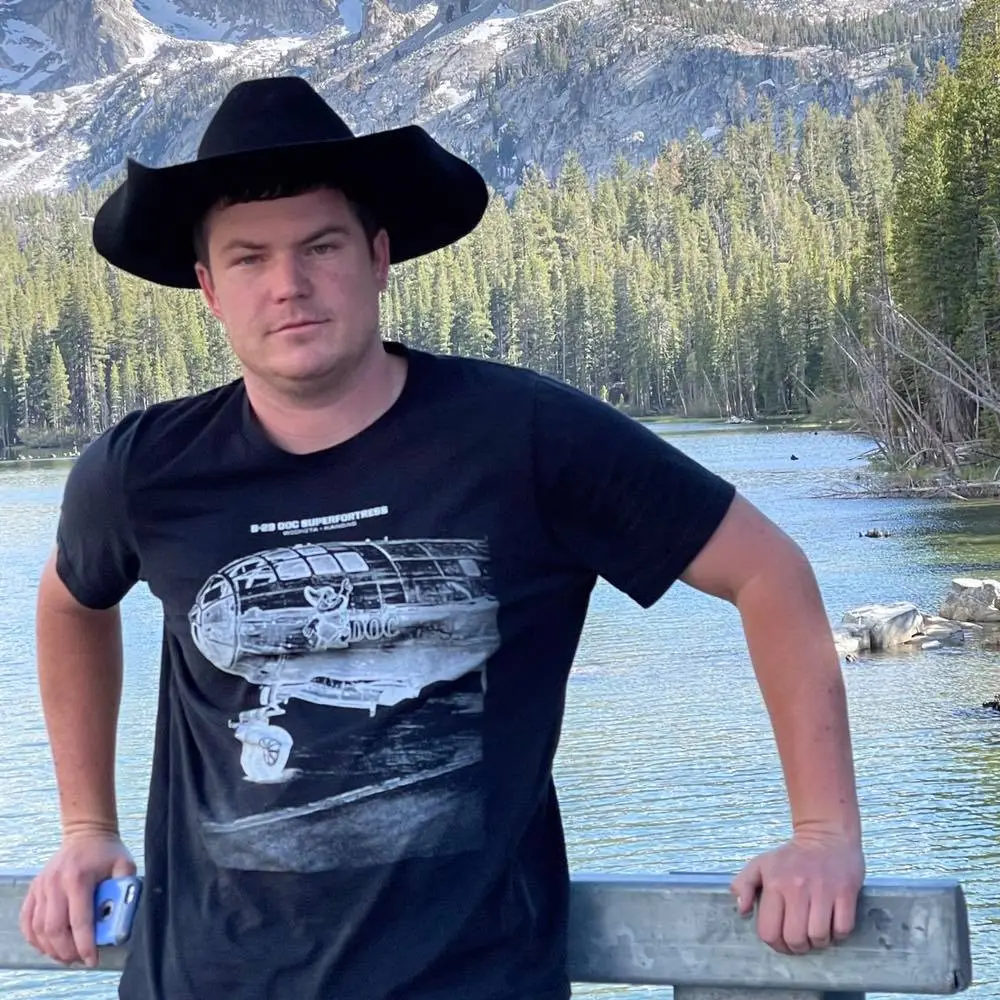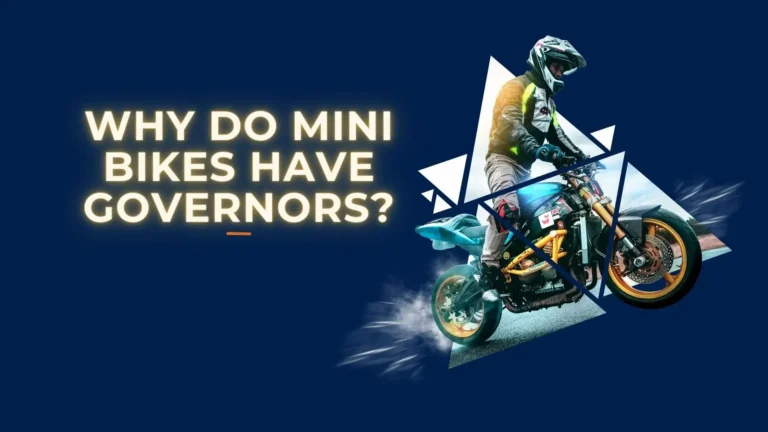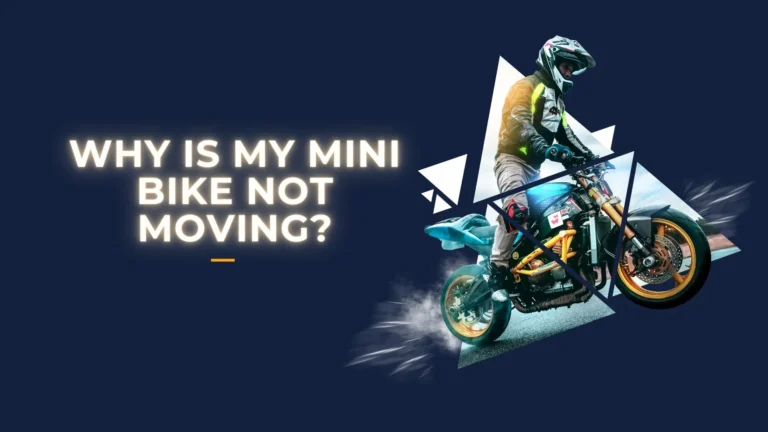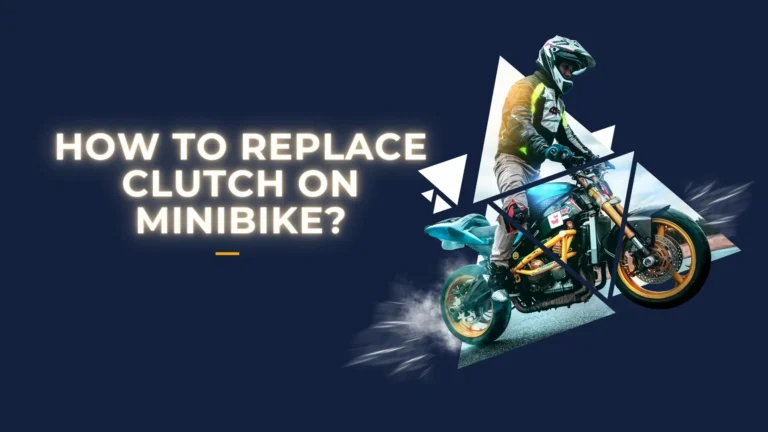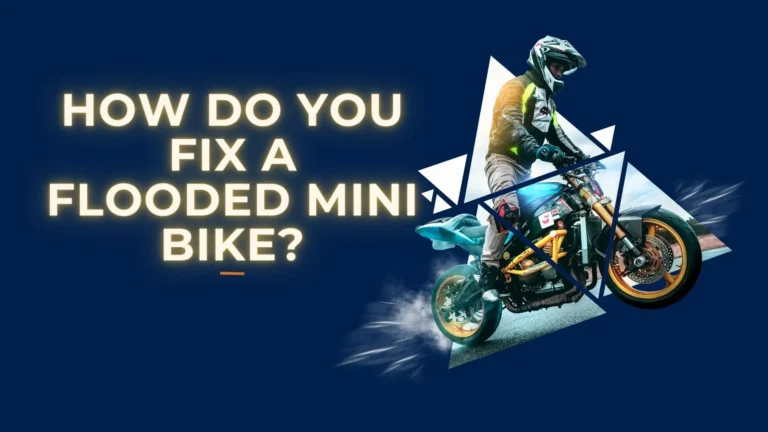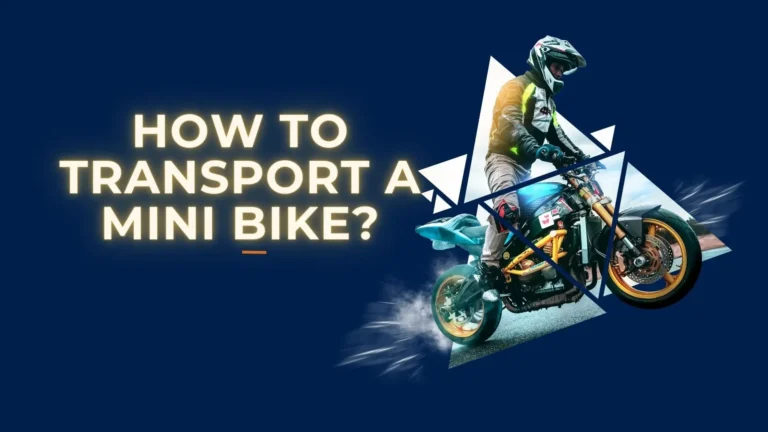How to Make Your Mini Bike Louder?
The most common ways to increase mini bike noise are by modifying the exhaust system, adjusting air flow, installing performance engine parts, and lowering gear ratios. However, be sure to make changes gradually and stay within legal noise limits for safety.
Riding mini bikes is popular. Many people like to customize their bikes. One common customization is making the mini bike louder.
There are some reasons people want a louder mini bike:
- A louder bike can feel more exciting to ride
- The noise gets attention
- Some people just think louder bikes are more fun
- It can also give the bike more power
But there are important things to consider:
- Check for local noise rules and follow them
- Only make small changes at a time
- Test each change carefully
- Big changes all at once can cause problems
- Always wear safety gear – loudness doesn’t replace safety
This guide shows steps to make your mini bike louder safely. We will look at modifications to:
- The exhaust
- The engine
- Other parts
Done right, these changes can make your bike sound better. With the tips here, you can amplify the noise legally. Let’s get started!
Key Takeaways
- Making a mini bike louder is a popular customization for more excitement, attention, and power.
- Consider local noise laws and make modifications incrementally for safety and reliability.
- Exhaust modifications like new systems, muffler work, and less restriction amplify noise.
- Air filter removals increase airflow and noise but reduce protection – use a cone-style filter instead.
- Adjusting the carburetor and installing a bigger main jet allows higher revving RPMs.
- Disabling the governor permits higher RPMs but risks engine damage without proper precautions.
- Upgraded engine parts like valves, cams, pistons enable higher RPM operation and noise.
- Lower gearing keeps the engine at high RPMs to sustain louder acceleration.
- Research noise regulations, use a sound meter, and monitor bike condition closely after modifications.
- Proper maintenance is key for optimal performance – inspect mods frequently as they add stress.
- Troubleshoot issues like backfiring or sputtering that can occur after modifications.
- Customized exhaust tips or muffler shapes provide creative style.
- Minimize excessively loud mods and unnecessary revving to reduce noise pollution.
- Amplifying mini bike sound takes the right approach – focus on safe, responsible riding first.
Change the Exhaust
Get a New Exhaust System
- Replace the stock exhaust with a performance system
- Choose a straight, single, or dual outlet style
- This will make the bike louder
- Installation is straightforward
- Remove old system and bolt on the new one
- Get help if needed
- Test ride and compare sound levels
Modify the Muffler
- Remove baffles and add holes to the muffler
- Steps:
- Remove muffler
- Take out baffles
- Drill extra holes
- Reinstall muffler
- Steps:
- Adding a second outlet also works
- Cut an extra hole for more noise
- Ride and check the noise
- Too many holes can lower performance
Other Exhaust Options
- Add exhaust wrap to amplify noise
- Heat shielding also protects legs
- Install a less restrictive spark arrestor
- Replace gaskets if leaks occur
- Be creative and customize the exhaust tip shape
Adjust the Air Filter
Remove the Air Filter
- Taking off the air filter gives more airflow and noise
- But it offers less protection from dirt
- Not recommended for regular use
Install a Cone-Style Filter
- Use a cone-style performance air filter instead
- Lets more air in than stock filter
- Still filters dirt to protect engine
- Steps:
- Remove old air filter
- Clean airbox
- Install new cone filter
- Ride and listen to sound
- Change filter regularly for best performance
Adjust the Carburetor
The carburetor controls the engine’s fuel-to-air mixture. Adjusting the carb can allow higher revving.
Parts of the Carburetor
- Throttle plate – controls airflow
- Jets – meter fuel into engine
- Main jet size affects high RPM range
All these you can purchase from here.
Install a Larger Main Jet
- Steps:
- Remove carburetor
- Take out main jet
- Install larger replacement jet
- Bigger jet enriches fuel mix
- Allows higher RPM operation
- Follow manufacturer’s jet sizing guide
Effects on Performance
- Larger main jet optimizes high rev fueling
- Permits faster acceleration
- Increases maximum engine speed
- Needs proper air filter and exhaust for best results
Enables Higher Noise
- Higher revving produces more sound
- Hard acceleration has louder effect
- But don’t exceed safe RPM range
Disable the Governor
What’s a Governor?
- Part that limits maximum engine RPM
- Prevents damage from over-revving
- Found on many stock mini bikes
Steps to Disable
- Locate governor mechanism
- Remove governor spring
- Adjust throttle cable for full range
Important: Only disable the governor if you fully understand the risks of potential engine damage from removing the rev limiter.
Effects of Disabling
- Permits higher maximum RPM
- Increases potential power
- Allows louder, higher revving
- But exceeds safe operation zone
- Higher likelihood of engine failure
- Monitor engine temp closely
- Consider using a rev-limiter ignition module for safety
Upgrade Engine Parts
Internal Improvements
- Higher performance valves, camshafts, pistons allow higher RPM
- Stronger valve springs resist floating at high RPM
- Cam profile optimizes valve timing for top-end power
- Forged pistons handle combustion forces
Steps:
- Remove cylinder head
- Install new valves, springs, retainers
- Replace camshaft
- Overhaul bottom end with new pistons
Larger Displacement
- Swap in a bigger cylinder and piston
- Increase displacement from stock
- Requires matching carburetor, exhaust, and tune
Effects
- Higher rev ceiling from upgrades
- More power across RPM range
- Increased noise at high RPM
- Extended engine life at peak output
Change the Gearing
Lower gear ratios keep the engine in its powerband, allowing sustained high RPMs. Based on my experience, thoughtful gearing modifications can significantly amplify noise and acceleration.
Expert Tips
- Reduce gearing 10-15% at a time for optimal results
- I recommend starting with the rear sprocket first
- Too much gear reduction risks sluggish top speed
- Finding the right balance takes testing and tuning
Steps
Here’s how you can swap out sprockets and chains:
- Put bike on stand and remove old chain
- Take off rear wheel and sprocket
- Install new rear sprocket and adjust chain tension
- Test ride and fine tune as needed
- For more reduction, replace front sprocket too
Effects
- Improved acceleration from lower gears
- Higher sustained RPM operation
- Increased sound at top-end RPMs
- But don’t exceed safe engine speeds
Noise Laws and Safety
Based on my personal experience modifying bikes, it’s critical to consider both legal noise limits and riding safety.
Expert Advice
- I strongly recommend verifying your local sound ordinances
- Utilizing a sound meter app to measure decibels is the best way to confirm compliance
- Incremental testing after each modification allows monitoring condition
- Don’t assume louder equals faster – control and stability matter too
Steps
- Research noise regulations in your area
- Download a sound meter app and get a baseline reading
- Test again after each exhaust or engine change
- If over the legal limit, modify or revert the change
Riding Safety
- Proper gear improves safety, regardless of noise
- Loudness does not reduce the importance of caution
- Monitor bike handling and stability after modifications
- Excessive noise has environmental impacts to consider
More Tips
Keep Up Maintenance
- Perform regular maintenance for best performance
- Follow the manual’s guidelines
- Check and change oil, air filters, plugs, etc.
- Inspect mods frequently as they add stress
Troubleshooting
- Backfiring or sputtering can occur after modifications
- Ensure fuel mix is adjusted properly
- Check for air leaks or exhaust blockages
- Modifications may require ECU tuning
Creative Customization
- Add unique exhaust tips for style
- Try custom muffler shapes or dual side exits
- Paint or powdercoat parts for your own look
Minimize Noise Pollution
- Use noise-dampening materials when possible
- Avoid excessively loud modifications
- Don’t rev engine unnecessarily
- Respect noise laws and community needs
Conclusion
Making your mini bike louder can be exciting, but stay safe and legal.
This guide covered key steps like:
- Replacing the exhaust system
- Modifying the muffler
- Changing the air filter
- Adjusting the carburetor
- Disabling the governor
- Upgrading engine components
- Lowering the gearing
Always research local noise laws and make incremental changes. Test thoroughly after each modification. Don’t forget proper riding gear for safety.
With the right approach, you can amplify your mini bike’s sound legally and reliably. But remember – louder does not necessarily mean faster or safer. Focus on responsible riding practices, not just noise output.
Applying the tips in this guide will help you achieve the unique sound you want while avoiding issues. Let us know if you have any other questions. And enjoy the thrill of opening up your mini bike’s voice. The path to performance lies in the journey as much as the destination.
